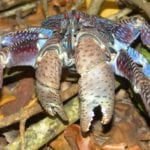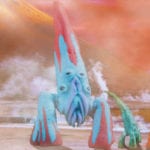 Music
Music  Music
Music  Health
Health 10 Crazy Ways Sleep Deprivation Can Affect You
 History
History 10 Enthralling Facts about the Field of Cloth of Gold
 Pop Culture
Pop Culture The Ten Greatest Engineers in Science Fiction History
 Humans
Humans Ten Journalists Who Got Caught Faking the News
 Travel
Travel 10 Best Hiking Trails in America with Breathtaking Views
 Weird Stuff
Weird Stuff The 10 Weirdest Materials That Can Be Used to Make Paper
 Crime
Crime The 10 Most Infamous Gangs in History
 Miscellaneous
Miscellaneous Ten Groundbreaking Tattoos with Fascinating Backstories
 Our World
Our World 10 Green Practices That Actually Make a Difference
 Music
Music The Cursed Decade: 10 Classic Rock Stars Who Had Low Periods in the 1980s
 Health
Health 10 Crazy Ways Sleep Deprivation Can Affect You
 History
History 10 Enthralling Facts about the Field of Cloth of Gold
Who's Behind Listverse?

Jamie Frater
Head Editor
Jamie founded Listverse due to an insatiable desire to share fascinating, obscure, and bizarre facts. He has been a guest speaker on numerous national radio and television stations and is a five time published author.
More About Us Pop Culture
Pop Culture The Ten Greatest Engineers in Science Fiction History
 Humans
Humans Ten Journalists Who Got Caught Faking the News
 Travel
Travel 10 Best Hiking Trails in America with Breathtaking Views
 Weird Stuff
Weird Stuff The 10 Weirdest Materials That Can Be Used to Make Paper
 Crime
Crime The 10 Most Infamous Gangs in History
 Miscellaneous
Miscellaneous Ten Groundbreaking Tattoos with Fascinating Backstories
 Our World
Our World 10 Green Practices That Actually Make a Difference
10 Odd Ways Life-Forms Change The World
The effects of humanity on the planet are in the news every day. Climate change, plastic waste in the ocean, and acid rain can all be traced to human activity.
It is impossible to live in the world without altering it in some way. Some of the natural wonders of our planet have been unwittingly created by animals, and some less impressive changes have been caused that are just weird. Here are ten startling ways that organisms have changed the world.
10 White Cliffs Of Dover
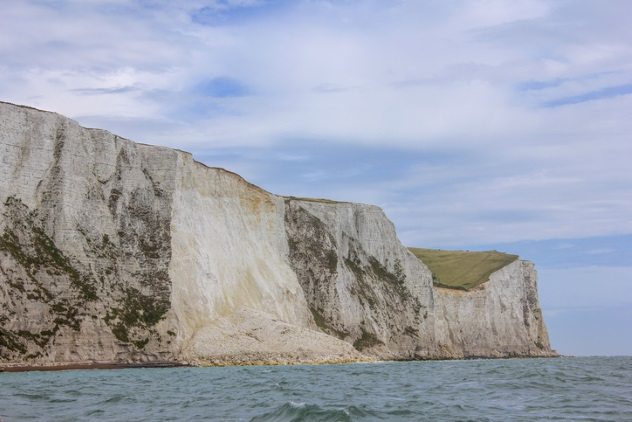
The White Cliffs of Dover are an iconic image of Britain. Rising hundreds of feet from the sea, they present a hard, white barrier to the rest of the world. Constant erosion and falls keep the front of the cliffs a gleaming white. They were the first sight of Britain that ships entering the harbor at Dover would see and the last that those departing would glimpse disappearing over the horizon. For all their size and cultural importance, the cliffs were made by the most humble of organisms. The chalk of the White Cliffs is composed of the tiny bodies of single-celled algae called coccolithophores.[1]
Coccolithophores have a special form of defense. To protect themselves, they make a shell of calcium carbonate plates. When the algae die, they settle to the seabed, and the calcium carbonate can become buried. Over geological ages, layers of the plates (called coccoliths) can build up that are hundreds of meters thick, even though each organism was microscopic. Time and pressure welded the shells together to form the limestone, which, when pushed up by geological processes, became the shining White Cliffs of Dover.
9 Parrotfish Poop Beaches
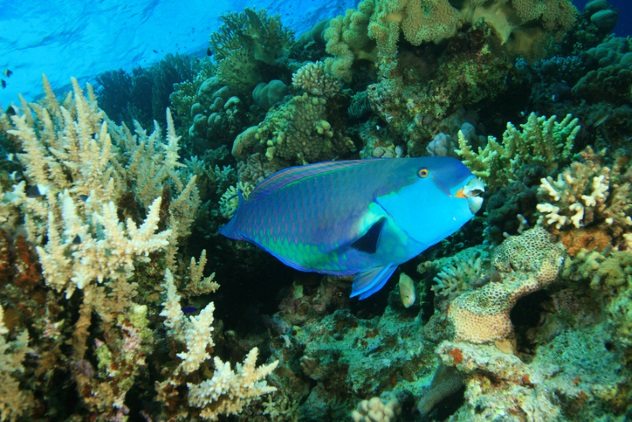
At the beach, you might trail your hand through the sand, marveling at the flickering white grains. How many grains of sand are there in the world? Another question, which probably doesn’t occur to most people, is what percentage of the world’s sand comes from fish poop?
Parrotfish live in tropical coral reefs and are a major producer of the white sand which makes many tropical beaches such sought-after holiday destinations. The fish get their food by using a sharp beak and flat teeth to nip pieces of coral from the reef and pulverize them. The organic matter is digested by the fish, but the harder inorganic parts pass out of the fish as sand. Because of the puffs of sand produced from parrot fish’s rear end, the Hawaiians gave the female redlip parrotfish a name that can be translated as “loose bowels.”
Still, just how much sand can a parrotfish produce? Researchers have found that a large parrotfish can churn out about 380 kilograms (840 lb) of sand per year.[2] With millions of parrotfish all munching their way through coral, that amounts to millions of tons of fish poop keeping white sand resorts in business.
8 Avocados
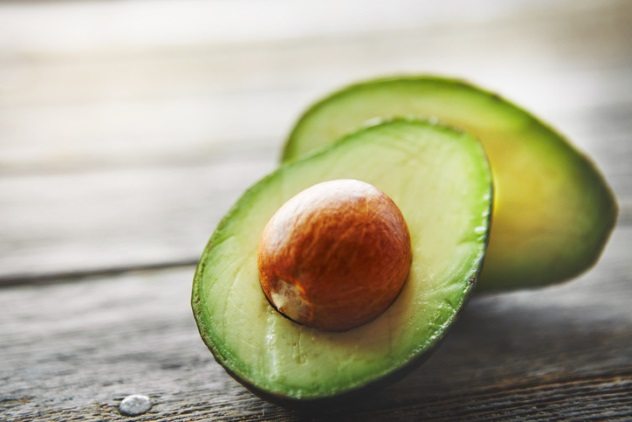
Many plants rely on animals to either pollinate their flowers or carry their seeds far afield. The Brazil nut has such a hard shell that it requires the tough teeth of squirrels or agoutis to crack them open. The rodents then carry the seeds away to bury them for safety. If they forget where they buried the seeds, then a new Brazil nut tree has a chance to grow. Other trees evolved to need the help of more impressive animals.
A berry may have hundreds of tiny seeds on it that can be spread by almost any animal that eats it. The avocado, on the other hand, has a single large seed in it. Few animals would be tempted to try to crack that nut. That’s because most animals today are smaller than the animals the avocado originally relied on. The avocado evolved in the age of megafauna in America.[3] Mammoths, horses, and giant sloths roamed the continent. When they found an avocado, they would swallow it whole, carrying the seed several miles before passing it. In its new home, the seed could grow without competing with its parent plant.
When humans arrived and the megafauna went extinct, the avocado found itself with no method of transporting its seed. That it survives today may be thanks to luck and the fondness of humans for guacamole.
7 The Oxygen Catastrophe
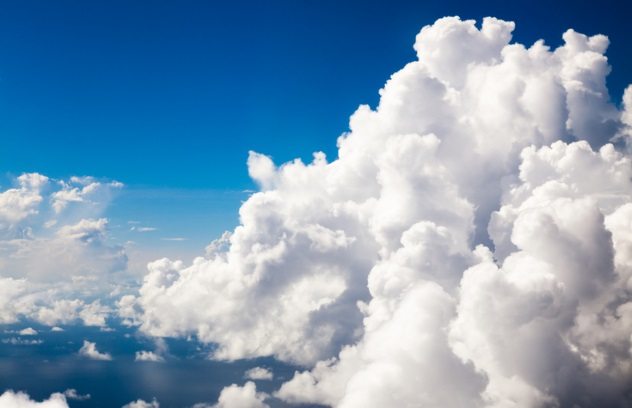
Everyone knows that oxygen is good for them. After all, we can’t live without it. Oxygen is a very reactive molecule, and too much can be a bad thing, even for organisms that require it. For some species, oxygen is a toxin to be avoided at all costs. It was the production of oxygen that caused the first of Earth’s great mass extinctions.
Life has existed on Earth for billions of years. Around 2.5 billion years ago, something called the Great Oxygenation Event, or the Oxygen Catastrophe, began.[4] The simple, mostly bacterial, life which thronged in the oceans performed all their functions in the absence of molecular oxygen. The arrival of cyanobacteria changed everything. They used the Sun’s light to photosynthesize, a process which produced free oxygen. Molecular oxygen is reactive, and at first, there were many places for it to go, by reacting with minerals. Once those reactants were saturated with oxygen, the only place for it to go was into the air and ocean. This killed all the species that could only grow in the absence of this toxic compound.
The buildup of oxygen in the atmosphere may have triggered a “snowball Earth.” The oxygen removed much of the methane in the atmosphere. Methane is a greenhouse gas, and without it, the temperature of the Earth plummeted, causing glaciers to form on the entire surface of the planet.
6 Animal Farts
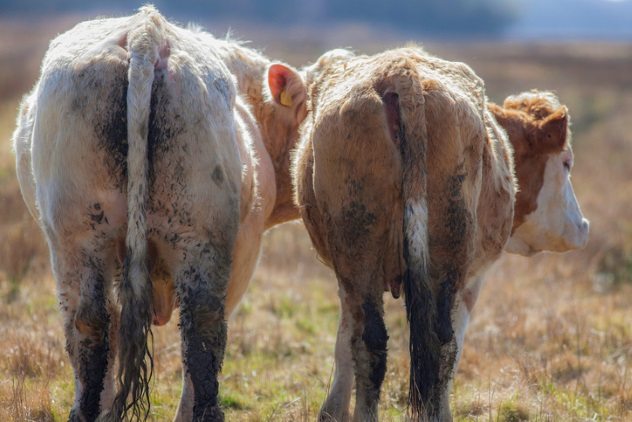
For every action, there is an equal and opposite reaction. The Gaia hypothesis suggests that the Earth is one vast, interrelated system that regulates itself. If too much oxygen cools the world, then a system will act to produce a warming agent. Humans are certainly producing many greenhouse gases, but the animal world plays its part, too.
In the Baltic Sea, Swedish scientists have discovered that flatulence produced by shellfish is contributing to climate change. Clams release gases containing methane and nitrous oxide, potent agents of global warming.[5] Another unlikely source of methane is the termite. Their digestion may be producing 20 million tons of methane each year.
Because farts are funny, some scientists are using them as a way of engaging with the wider public on important issues of climate change and biological research. They’re building a database of animals that fart. Those wondering which animals partake in tooting can use the Twitter hashtag #DoesItFart.
5 Mammoth Landscaping
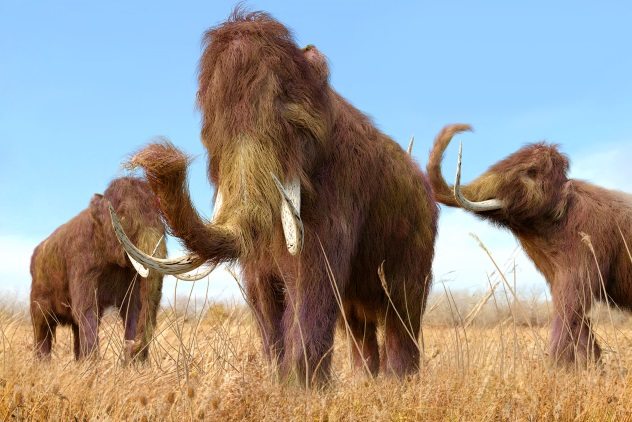
Mammoths, as their name suggests, were mammoth creatures. Being so large, it is to be expected that they had a large effect on their environment. Now, research has shown just how big that effect was.
By tracing mammoth droppings, researchers have been able to time the disappearance of the animals and follow the environmental changes that occurred with it. The scientists searched for a type of fungus which can only live by passing through an animal’s gut. Where they found the fungus in large quantities, they could be sure that a large animal had deposited it. As they traced the decline in the fungus, they were tracing the decline of mammoth numbers. Over 1,000 years, the mammoth population disappeared. Without mammoths to trample the land, trees which would once have been knocked over had a chance to thrive. The death of the mammoths created the vast northern forests of the globe.
Some have wondered whether the extinction of mammoths may have warmed the planet. Because trees are darker than grasses, they absorb more solar radiation and trap more heat. One study suggested that the new forests which sprang up without mammoths may have warmed the Earth by 0.2 degrees Celsius.[6]
4 Sloth Tunnels
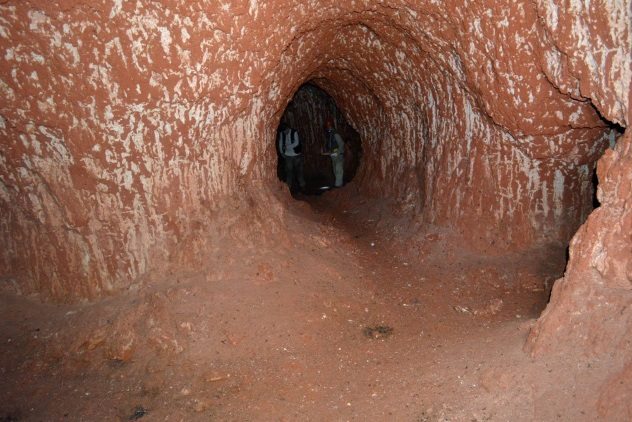
In South America, large tunnels have been discovered since at least the 1930s that had no geological explanation.[7] The sides of the tunnels were oddly smooth and relatively fresh-looking. One theory was that they were dug by early humans, but there was little evidence for this. Few researchers showed much interest in the tunnels, so they were left unexplained until 2017.
Now, these tunnels are known to be palaeoburrows, and they’re revealing lots of information about the animals that made them. The walls of many of the burrows still show the marks of the claws which dug them. Some of the burrows can be up to 2 meters (6.6 ft) wide, with researchers able to stroll comfortably through them. The tunnels can be hundreds of feet long, with multiple branches deep underground.
The gigantic palaeoburrows were made by giant sloths which once lived in the area. Now, the burrows are being actively researched to date them accurately and discover what life was like for giant sloths. Thousands of palaeoburrows have been documented, with an unknown number waiting to be found.
3 Wolves Changing Rivers
Wolves have been predators across the Northern Hemisphere since time immemorial, until humans started to hunt them because they threatened their farm animals. Wolves hadn’t lived in Yellowstone National Park for 70 years before they were reintroduced in 1995. The large elk, which had dominated the park, suddenly found that they had a new predator. Researchers had expected some changes in the park’s ecosystem, but they found that the introduction of wolves changed the way that rivers behaved.[8]
The elk had been eating the saplings of trees. Because of this, the trees were thinned out, especially along riverbanks. Without the root systems of the trees in the banks, the sides of the rivers were more likely to collapse and shift the course of the river. With wolves keeping the population of elk in check, the trees began to return, and the riverbanks, now held together by the trees, began to steepen and become stronger.
While there is no doubt that wolves have had an effect on the ecosystem of Yellowstone, there are those who question the popular narrative as presented in the video above. It may be that small changes and natural variations, seen after the introduction of the wolves, were overinterpreted. Too much change to the ecosystem may have occurred for the wolves to have been able to reverse it. Either way, in their presence or absence, wolves can change rivers.
2 Midges Changing Antarctica
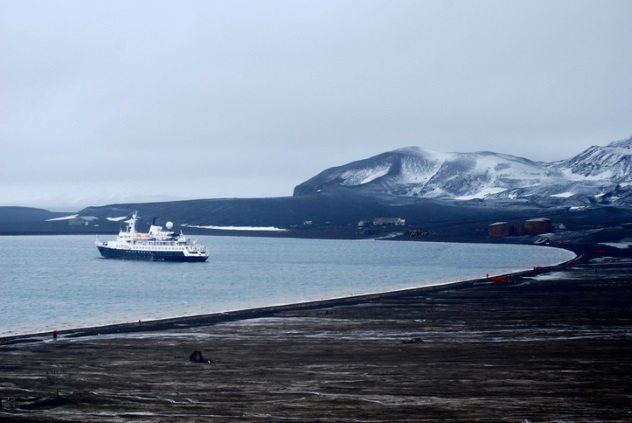
Horror films may be fond of showing terrors emerging from the frigid wastelands of the poles, but things from outside invading the poles may be far more dangerous. Crabs, which previously were unable to survive in the cold waters of Antarctica, have been found marching south as ocean temperatures rise. More worrying is an insect that has made its way to the continent.
Eretmoptera murphyi is a midge native to South Georgia, an island in the Southern Atlantic Ocean. On the island, its lifestyle leads to the rapid decay of organic matter and the reintroduction of nutrients into the ecosystem. Now, it has been carried to Antarctica by the actions of humans. Antarctica has a well-defined and very slow ecosystem that leaves nutrients trapped in its soil for long periods. This midge is changing the way that soil in Antarctica behaves.[9] The effects in the long term have yet to be seen, but other creatures may exploit this sudden abundance of nutrients available, unless the invasion of E. murphyi is defeated.
1 Salmon Sex Can Move Mountains
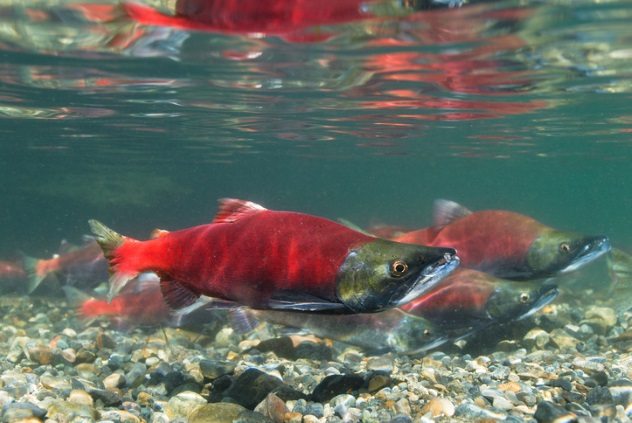
When salmon reach maturity in the ocean, they swim up rivers to spawn. Millions of fish all moving at once can be a major feeding opportunity for bears and other animals, but some researchers suggest that this mass mating may shape mountains and valleys.
In a scientific paper with the unusually stimulating title “Sex that moves mountains: The influence of spawning fish on river profiles over geologic timescales,” scientists have for the first time modeled the effects of salmon spawning on the landscape.[10] Their models suggest that over long time periods, salmon spawning in an area can increase erosion and lower the level of the land by up to 30 percent compared to areas with no salmon. When female salmon lay their eggs, they stir up the sediment of the river, allowing it to be carried away by the current.
Different salmon species have differing effects on rivers. Some prefer to lay their eggs in coarse sediment, others in finer. This research has suggested that where more species of salmon come together to breed, there will be more erosion. That the salmon are having Earth-shattering sex will likely come as little comfort to the fish themselves. Most die immediately after mating.
Read about more things that have a surprising effect on the world on 10 Amazing Ways Ancient Oceans Affect Our Lives Today and 10 Ways the Opium Poppy has changed the World.


